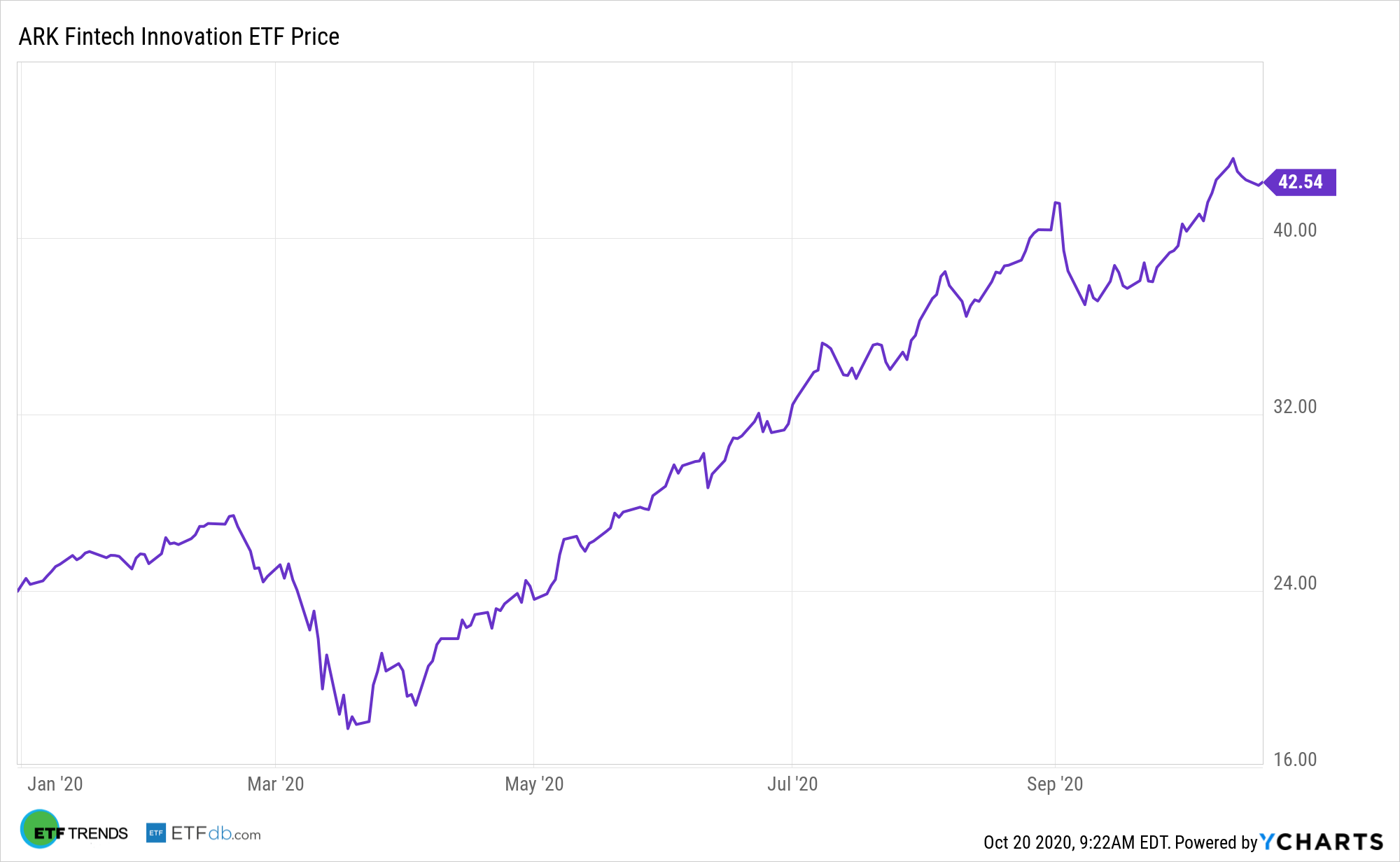Just as e-commerce is disrupting the concept of brick-and-mortar retail stores, fintech is doing the same with the antiquated notion of bank branches. That’s a longer-ranging theme that holds positive implications for assets such as the ARK Fintech Innovation ETF (NYSEARCA: ARKF).

ARKF member firms are companies that are powered by innovations and are working to disintermediate or bypass the current financial markets and challenge traditional institutions by offering new solutions that are better, cheaper, faster, and more novel and secure.
“Now, however, the internet and smartphones are transforming the distribution of financial services,” writes ARK Invest analyst Max Friedrich. “Thanks to cellular services, we believe smartphones are distributing financial services much more efficiently and cost-effectively. Digital wallets – bank branches in user pockets – are rendering expensive physical infrastructure useless, putting at risk hundreds of billions dollars of traditional financial institutions’ assets.”
ARK’s Chance to Disrupt
The broader financial services industry, including traditional offerings such as bank branches and insurance, drives $3 trillion in economic impact, confirming there’s substantial opportunity for ARKF components to disrupt an old, slow-moving sector.
Moreover, data confirm that even before the coronavirus pandemic, which is sparking increased use of cashless/contactless payments, many customers were reducing visits to bank branches.
“After tracking the usage of financial services across demographic factors such as income, occupation, and age between 2013 and 2017, the Federal Deposit Insurance Corporation (FDIC) reported a drop in the use of bank branches and an increase in digital and mobile banking,” notes Friedrich.
Digital wallet purveyors, such as PayPal (NASDAQ: PYPL) and Square (NYSE: SQ), which are ARKF components, are likely to resonate with investors because the companies’ customer acquisition costs are far below those of traditional banks.
“We believe the main reason for the explosive growth in digital wallets is lower customer acquisition costs. Compared to the $1,000 on average that traditional financial institutions pay to acquire a new customer, digital wallets invest only $20 thanks to their viral peer-to-peer payment ecosystems, savvy marketing strategies, and dramatically lower cost structures,” according to Friedrich.
Adding to the allure of many ARKF components is that these firms lack the high fixed costs old school banks deal with. Operating one traditional bank branch costs more than $500,000 per year, but that’s not something the PayPals and Squares of the world have to deal with.
For more on disruptive technologies, visit our Disruptive Technology Channel.
The opinions and forecasts expressed herein are solely those of Tom Lydon, and may not actually come to pass. Information on this site should not be used or construed as an offer to sell, a solicitation of an offer to buy, or a recommendation for any product.

